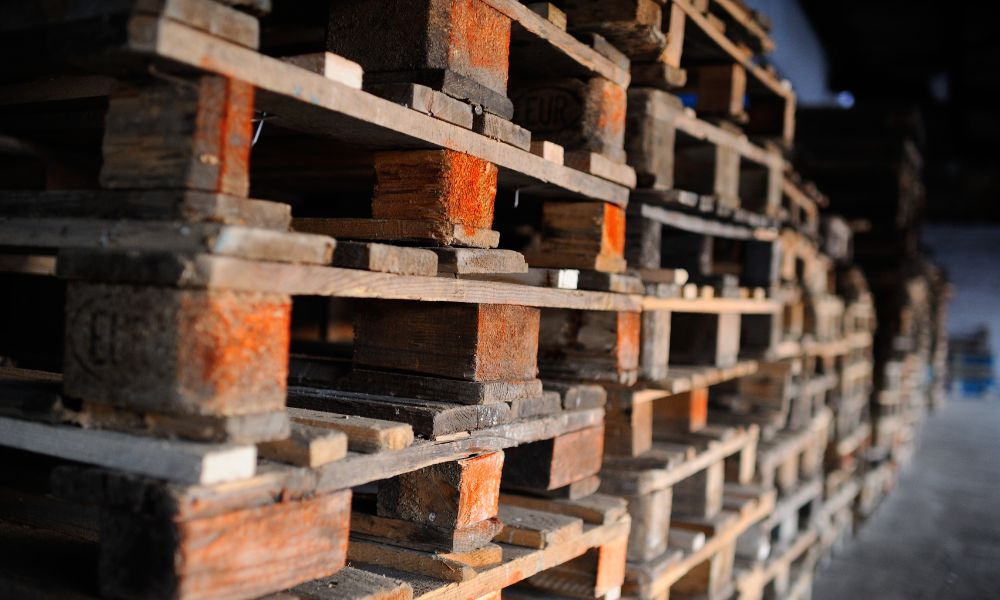- By First Alliance Logistics Management
- December 5, 2023
- Buying Pallets
The logistics and warehousing industries rely on the efficient storage and transport of goods. Pallets and skids are two common handling solutions that serve similar functions but differ in a few ways. This guide explores the differences between pallets and skids and their unique characteristics and applications to help you navigate the logistics landscape.
Defining Pallets and Skids
Pallets are flat, horizontal platforms with multiple slats (top deck boards) and stringers (vertical beams) to support the shape. They support goods in transit and are compatible with forklifts for easy handling in warehouses or transportation. Pallets have been part of the supply chain since the early 20th century, streamlining logistics and replacing manual material handling methods.
Skids are the earliest forms of wooden shipping platforms that predate modern pallets. These structures are similar to pallets but have a single deck with no bottom boards. The structural integrity of skids relies on the strength of the top planks, which sit atop thick timber or metal.
Distinguishing Features and Uses
The most prominent difference between pallets and skids is their construction. While pallets feature top and bottom deck boards sandwiching stringers for structural support, skids only have a full deck with a reinforced base. This variation impacts their applications and advantages.
Skids are ideal for heavy loads or long-term storage, as their sturdier design enables them to support heavy weight. They are common in the construction and manufacturing sectors for storing heavy machinery or large equipment.
In contrast, custom wood pallets are ideal for high-volume warehouses in the consumer goods sector. Their versatility and compatibility with forklifts make them perfect for moving goods quickly around the facility.
The Drawbacks
While pallets and skids have unique advantages, they also present challenges. Skids, for instance, are less versatile than pallets due to their semi-permanent nature and lack of a bottom deck. They may be better as a base for permanent fixtures or heavy equipment but aren’t as good as pallets for moving goods.
Pallets offer stability and support for heavy loads. However, they typically require frequent inspections and repairs because of their heavy use. Luckily, you can get custom wood pallets to meet the needs of your operations.
To determine the best option for your logistics or warehousing needs, consider the nature of your operations and the materials you deal with. For heavy-duty or long-term applications, skids may be the right solution. Conversely, pallets may serve you better in high-volume environments where speed and efficiency are paramount for your operations.
Knowing the differences between pallets and skids can help you optimize your logistics processes. Whether you stock up on pallets or skids, you and your crew can confidently handle goods. The next time you want custom wood pallets, contact us at First Alliance Logistics Management.

